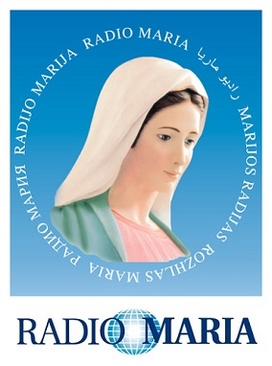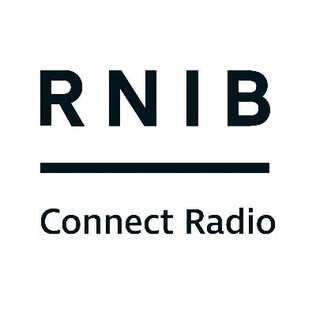Related Research Articles
A subcarrier is a sideband of a radio frequency carrier wave, which is modulated to send additional information. Examples include the provision of colour in a black and white television system or the provision of stereo in a monophonic radio broadcast. There is no physical difference between a carrier and a subcarrier; the "sub" implies that it has been derived from a carrier, which has been amplitude modulated by a steady signal and has a constant frequency relation to it.
Second audio program (SAP), also known as secondary audio programming, is an auxiliary audio channel for analog television that can be broadcast or transmitted both over-the-air and by cable television. Used mostly for audio description or other languages, SAP is part of the multichannel television sound (MTS) standard originally set by the National Television Systems Committee (NTSC) in 1984 in the United States. The NTSC video format and MTS are also used in Canada and Mexico.
Wisconsin Public Radio (WPR) is a network of 34 public radio stations in the state of Wisconsin. WPR's network is divided into two distinct analog services, the Ideas Network and the NPR News & Music Network, as well as the All Classical Network, a digital-only, full-time classical music service.
Audio description, also referred to as a video description, described video, or more precisely visual description, is a form of narration used to provide information surrounding key visual elements in a media work for the benefit of blind and visually impaired consumers. These narrations are typically placed during natural pauses in the audio, and sometimes during dialogue if deemed necessary. Occasionally when a film briefly has subtitled dialogue for a character speaking a different language in the film such as in the 1977 film, Star Wars: A New Hope with Greedo's confrontation with Han Solo, the narrator will read out the dialogue in character.
An audiobook is a recording of a book or other work being read out loud. A reading of the complete text is described as "unabridged", while readings of shorter versions are abridgements.

FM broadcasting is the method of radio broadcasting that uses frequency modulation (FM). Invented in 1933 by American engineer Edwin Armstrong, wide-band FM is used worldwide to transmit high-fidelity sound over broadcast radio. FM broadcasting offers higher fidelity—more accurate reproduction of the original program sound—than other broadcasting techniques, such as AM broadcasting. It is also less susceptible to common forms of interference, having less static and popping sounds than are often heard on AM. Therefore, FM is used for most broadcasts of music and general audio. FM radio stations use the very high frequency range of radio frequencies.
Subsidiary Communications Authorization (SCA) in the United States, and Subsidiary Communications Multiplex Operation (SCMO) in Canada, is a subcarrier on a radio station, allowing the station to broadcast additional services as part of its signal.

WDET-FM is a public radio station in Detroit, Michigan. It is owned by Wayne State University with its studios and transmitter in the Cass Corridor neighborhood. WDET broadcasts shows from National Public Radio, Public Radio International and American Public Media. The station is the primary provider of news involving the American automotive industry. and the Michigan Association of Broadcasters (MAB) named WDET the 2021 Public Radio Station of the Year.

WETA is a non-commercial, public FM radio station licensed to serve Washington, D.C., broadcasting a classical music format. Its studios are located in Arlington, Virginia and its broadcast tower is located near Arlington at.
WGUC is a public FM radio station in Cincinnati, Ohio. It is owned by Cincinnati Public Radio and has a classical music format. WGUC broadcasts using HD Radio technology and plays jazz on WGUC-HD2 and adult album alternative on WGUC-HD3. WGUC has radio studios in the same building as PBS Network affiliate WCET Channel 48, the Crosley Telecommunications Center on Central Parkway in Cincinnati.

WRBH is a non-commercial FM radio station in New Orleans, Louisiana. It primarily provides a radio reading service for the blind and print-handicapped without the usual use of a private subcarrier decoder, one of three such stations in the United States. Services include readings of books, original programming, and readings of periodicals, including The Wall Street Journal and The Times-Picayune/The New Orleans Advocate. WYPL in Memphis, Tennessee, provides similar services. The station also carries Tulane Green Wave sports, including Tulane's women's basketball and baseball.

Illinois Public Media, previously "WILL AM-FM-TV", is a not-for-profit organization located within the College of Media at the University of Illinois Urbana-Champaign, which is responsible for the university's public media service activities. It manages three university educational broadcasting stations licensed to Urbana, Illinois, United States: NPR member stations WILL and WILL-FM, and PBS member station WILL-TV. Illinois Public Media provides locally produced programs to supplement the network programs carried by its stations. In addition, it manages the Illinois Radio Reader Service, a streaming audio service for the reading impaired.

WILL-FM is a public, listener-supported radio station owned by the University of Illinois Urbana-Champaign and licensed to Urbana, Illinois, United States. It is operated by Illinois Public Media, with studios located at Campbell Hall for Public Telecommunication on the university campus. Most of WILL-FM's schedule is classical music with NPR news programs heard in weekday morning and afternoon drive times. Weekends feature classical and other genres of music, including jazz and opera.

The Radio Information Service or RIS was a reading service for the blind in Pittsburgh, Pennsylvania that was carried via subcarrier on WDUQ in Pittsburgh.

WUWF Public Media consists of radio, television and internet services. WUWF FM is a public radio station licensed to the board of trustees of the University of West Florida, located in Pensacola, Florida. The station is a member of National Public Radio, Florida Public Media, Florida Public Radio Network, American Public Media and Public Radio International. The station's main signal is broadcast on 88.1 FM with a non-directional power output of 100,000 watts from a 1,000 feet (300 m) tower located in Midway, Florida. The primary antenna array is centered at 614 feet (187 m).

Radio Maria is an international Catholic radio broadcasting service founded in Erba, province of Como, in the diocese of Milan, Italy, in 1987.
The Kansas Audio-Reader Network is a radio reading service for the blind in Lawrence, Kansas. The program began operating on October 11, 1971, and is the second to operate in the United States. Audio-Reader broadcasts the content of books, newspapers, magazines, and other printed materials via a closed-circuit radio to certified users in Kansas, Missouri and Oklahoma. In addition to the radio program, Audio-Reader operates other services for the blind, including a telephone information service called Telephone Reader, audio description of theater in Kansas City, Missouri, and Lawrence, Kansas, cassette taping of printed materials, and a sensory garden.

RNIB Connect Radio is a British radio station that is part of Royal National Institute of Blind People and was Europe's first radio station for blind and partially sighted listeners. It broadcasts 24 hours a day, 7 days a week online, on 101 FM in the Glasgow area, and on Freeview channel 730. Live shows make up around half of the station's output, with the overnight schedule being used as a showcase for the best music, features, interviews and articles from the past few days. Most of the presenters are blind or visually impaired. From 2007 until early 2016 it was known as Insight Radio.

Online radio is a digital audio service transmitted via the Internet. Broadcasting on the Internet is usually referred to as webcasting since it is not transmitted broadly through wireless means. It can either be used as a stand-alone device running through the Internet, or as a software running through a single computer.
The Minnesota Radio Talking Book Network was the world's first radio reading service for the blind; the first on-air date was January 2, 1969. The purpose of a radio reading service is to make current print material available, through the medium of a radio, to those who cannot read it because of a physical condition such as blindness, visual disability, dyslexia, or strokes. In 1969, there were no other options available to blind and visually impaired people.